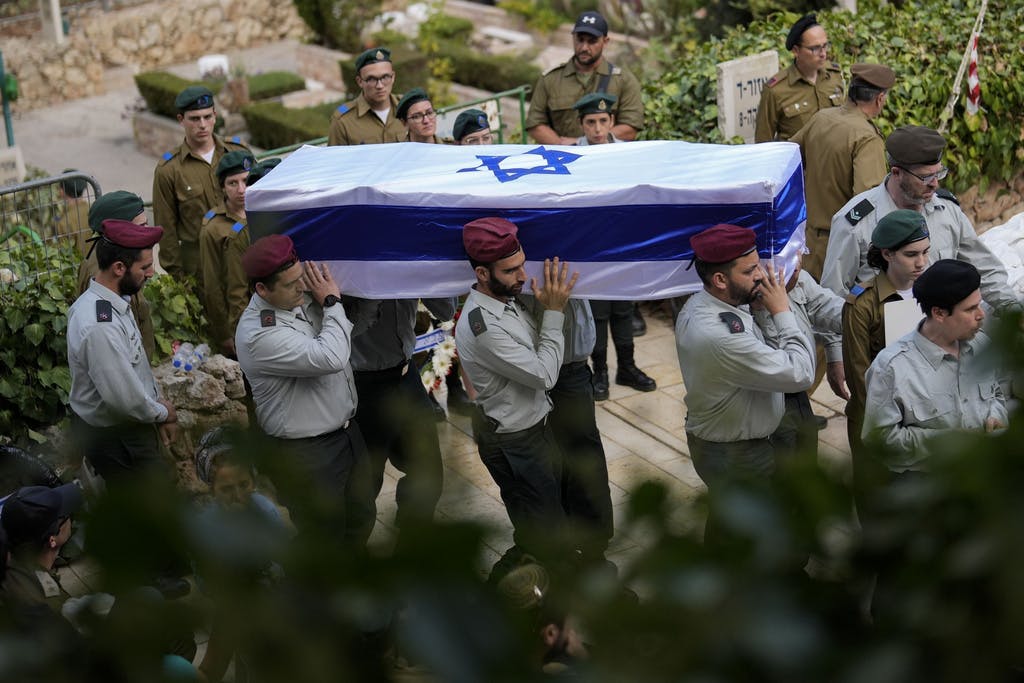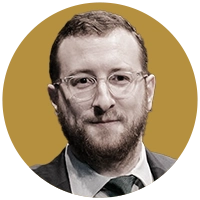‘Every Person Is a World’: How the Martyrs of Israel Are Laid to Rest
Jewish law holds that, having perished for the sanctification of God’s name, they are buried in the clothes they died in so as to ‘awaken the heavens.’

Burial of the dead is a meticulous process in the Jewish tradition. Bodies are thoroughly cleaned, groomed, and nails are cut. Then, in a ritual known as “tahara,” or “purification,” the body is immersed in a pool of cold water known as a mikvah.
Not so for the more than 1,300 victims of Saturday’s assault on southern Israel. They are considered to have the unique status of “Kedoshim [Holy Ones]” or martyrs in Jewish law.
“When it comes to someone who was killed al kiddush hashem [for the sanctification of God’s name], Jewish law dictates that we don’t touch anything,” explains Rabbi Elyada Goldwicht. “The way the person is found is the way that he’s buried. He is buried with his clothing, with his shoes, with his pants, with everything that’s on.”
The deceased martyr doesn’t need purification because they have already attained the pinnacle of holiness due to the nature of their death, says Rabbi Goldwicht. “They got killed because they identified as a Jew, and they have a special place in the hearts of the Jewish people, and they have a special place in heaven.”
“They come up dressed differently, and that’s meant to awaken the heavens and shake things up.”
The origins of this tradition can be traced to the Talmud, some 1500 years ago. Tractate Bava Batra describes martyrs as enjoying such an exalted status in Judaism that “no one can stand in their section.”
There are few men who have come into contact with the bodies of as many martyrs as Rabbi Goldwicht has. As a reservist in an Israel Defense Forces search and rescue unit, he’s been working since the weekend in 12 hour shifts at the IDF rabbinate’s Shura base, near Ramle in central Israel, to identify and prepare hundreds of bodies for burial.
Most of the bodies he’s processed are those of young men and women who attended a music festival near the Gaza border on the morning of the attack. They were ambushed and gunned down by Hamas terrorists as they fled. Some were burned alive.
Ten large shipping containers were hastily added to the Shura base’s infrastructure to handle the volume of bodies. When Rabbi Goldwicht arrived, he says, he was greeted by an army commander who told the reservists, “you are going to see things that you’ve never seen in your life.”
The group then paused, said a prayer from the Book of Psalms and the kaddish prayer for the dead, and then climbed up onto a truck and started offloading bodies. They worked fast and diligently to identify bodies “without stopping or resting” in order that they might save “a minute or five minutes of anguish for the families of the deceased.”
On Monday, an Israeli government official presented the group with a quandary. They had already identified close to 50 bodies from the devastated Kibbutz Be’eri, and could not locate any next of kin to take possession of the bodies and organize the burials. “We have no known living family members,” the unnamed official said. “Their families are missing. They are either taken captive, or killed and not yet identified.”
Showing utmost respect in the handling of the bodies is also fundamental, Rabbi Goldwicht says. Bodies are never thrown or dropped. “We ask for forgiveness” if a body is moved. Stepping over a body is also forbidden. “If a drop of blood comes out, we collect it and wipe it off the floor so that it can be buried” with the deceased.
How does he find the strength to perform this grim task for hours on end? Firstly, it’s knowing that they are “providing a service for the Jewish people” and for the families of the victims, “knowing that their children are taken care of.”
Second, is the opportunity to draw a contrast with the bloodthirsty killers from Hamas and show “the respect for life that the Jewish people have. How much we respect every individual, even after death.”
“Every person is a world. It says in the Torah that a person was created in the image of God. And every human being is a piece of God. That’s how we view it.”

